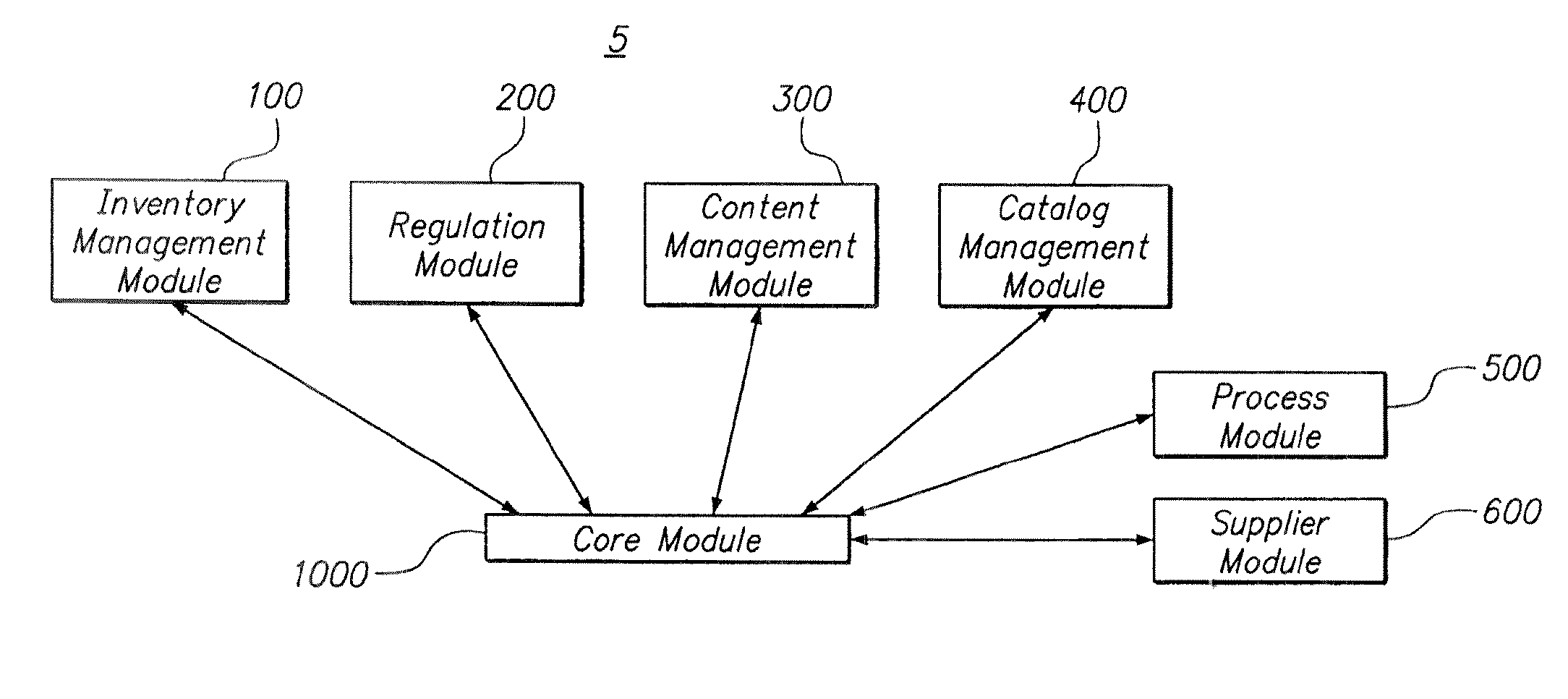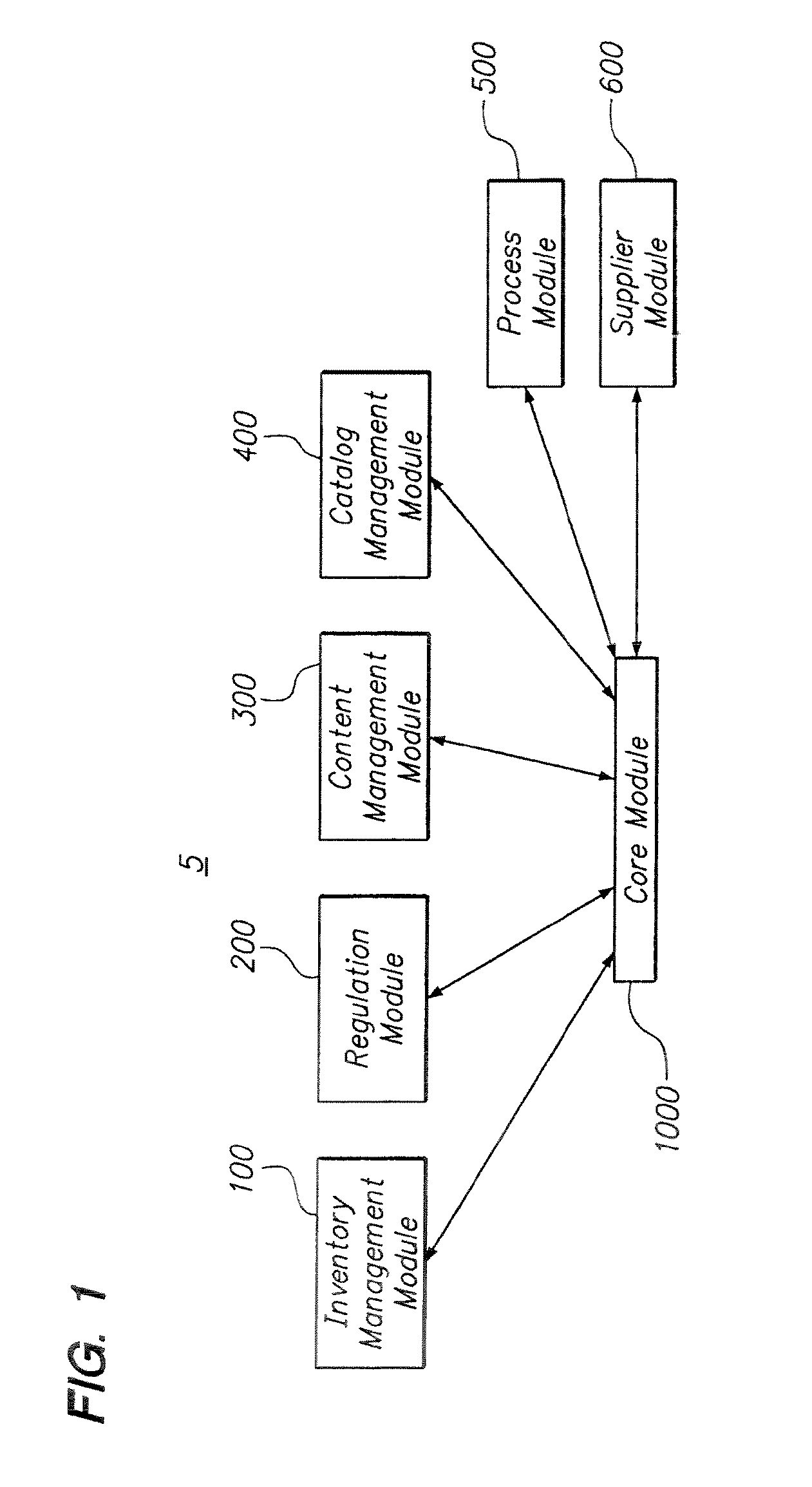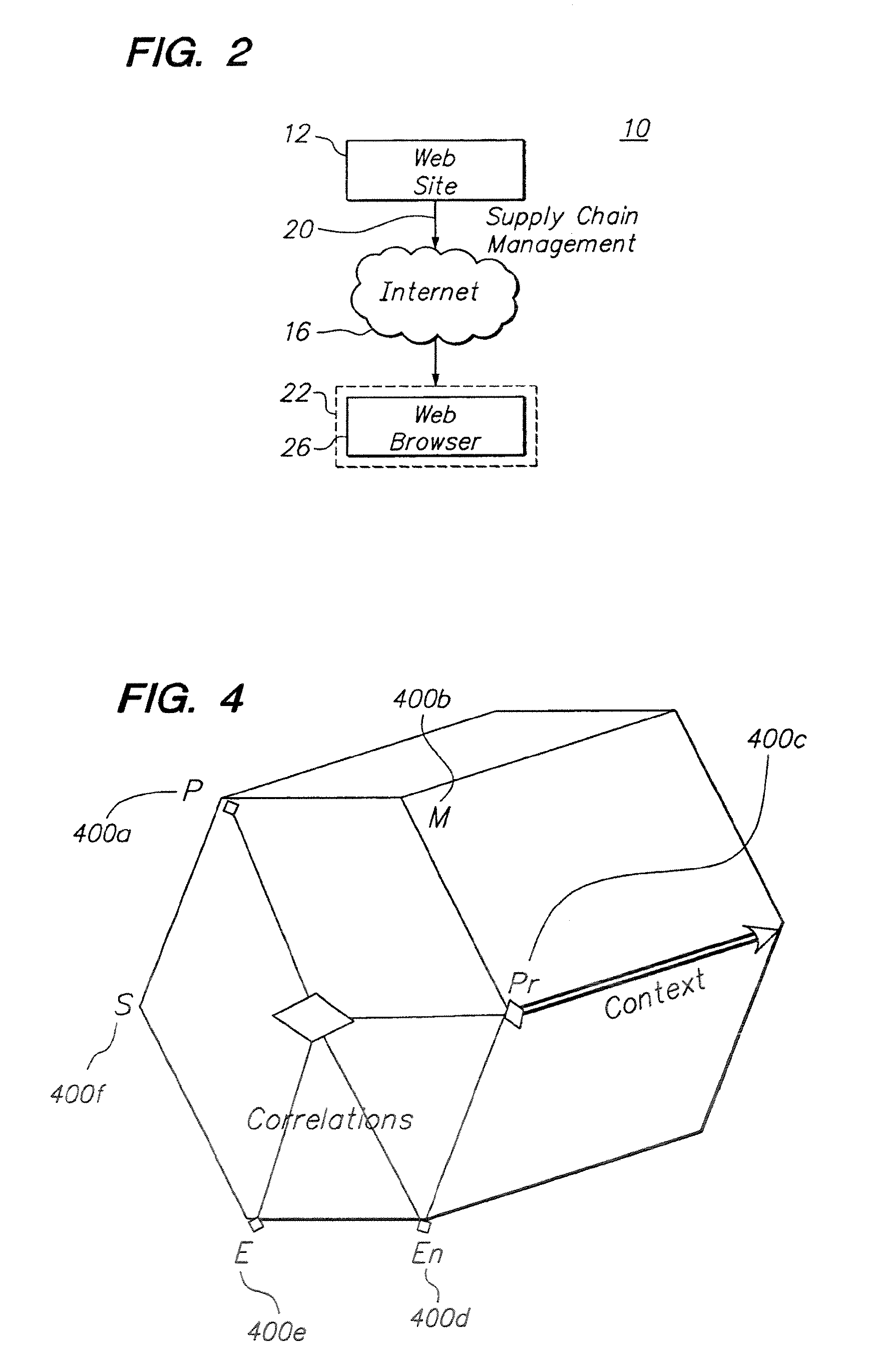Systems and Methods for Managing the Development and Manufacturing of a Beverage
a technology for managing the development and manufacturing of beverages, applied in the field of regulated industries, can solve the problems of increasing the difficulty of managing information associated with product history records, affecting the quality of beverage products, etc., and achieves the effect of facilitating the regulatory and tax database and being easy to manag
- Summary
- Abstract
- Description
- Claims
- Application Information
AI Technical Summary
Benefits of technology
Problems solved by technology
Method used
Image
Examples
Embodiment Construction
[0029]FIG. 1 is a block diagram of a product conformance management system 5 having an inventory management module 100, a regulation module 200, a content management module 300, a catalog management module 400, a process module 500, a supplier module 600, and a core module 1000. It will be recognized by those of ordinary skill in the art that the number and types of modules available may change on the type of industry. For example, for the pharmaceutical industry, there may also be a material management module, an equipment management module, a standards module, a method execution module, and a traceability module. In this regard, a solution for a specific industry may contain many suites which are a collection of modules. Each of the modules is independently deployable on the platform. By having the multiple modules, the solution can be easily deployed and expanded at customer sites in a phased manner.
[0030]The inventory management module 100 includes domain knowledge of the pharma...
PUM
 Login to View More
Login to View More Abstract
Description
Claims
Application Information
 Login to View More
Login to View More - R&D
- Intellectual Property
- Life Sciences
- Materials
- Tech Scout
- Unparalleled Data Quality
- Higher Quality Content
- 60% Fewer Hallucinations
Browse by: Latest US Patents, China's latest patents, Technical Efficacy Thesaurus, Application Domain, Technology Topic, Popular Technical Reports.
© 2025 PatSnap. All rights reserved.Legal|Privacy policy|Modern Slavery Act Transparency Statement|Sitemap|About US| Contact US: help@patsnap.com



